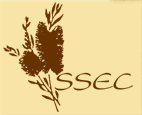The Village Grows Up |
Village Life
After the First World War, Kurnell village began to take shape, replacing the 'shanty town' of fishing shacks and holiday camps. It was a small, peaceful hamlet and attracted retired and unemployed folk. The main settlement areas were around the waterways. Regular dances were held in the Cox general store each Saturday night and in Guy's Hall on holiday weekends and special occasions; and later in Marton Hall. The Village of Kurnell was officially proclaimed in the Government Gazette of November 1933. |
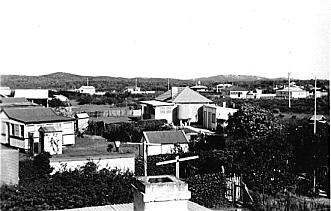 |
Between the wars and until the early 1950s, Kurnell boasted an open-air theatre. Lee Jones recalls: "We used to go down to the Open Air Theatre in Cook Street, a little to the left of the Caltex cutting. On rainy nights we'd sit there in raincoats, our rubber boots on and our umbrellas up. The ground could be covered in water but we would stay and watch the movie out. It was lovely on a nice summer's night, if you didn't mind the mosquitoes and sandflies. It was fun sitting there looking at the stars on the screen and in the sky.
"Where 'Eze by the Bay' is now, on the corner of Prince Charles Parade and Polo Street was vacant land. Occasionally we had a special night's treat. Free movies! So people brought their chairs, pillows, blankets and kids and settled in for a pleasant night's viewing. Now and then the wind came up and blew the screen away and everyone scrambled back to their camps.
"After this theatre closed, the Saturday night bus used to take us in to Cronulla. There was no road of course, and the bus would get bogged two or three times a trip. The driver would shout, 'All out!' everybody would have to push the bus, you know. I must admit that if it was raining it was the gentlemen who ended up at the theatre wet, not the ladies!" |
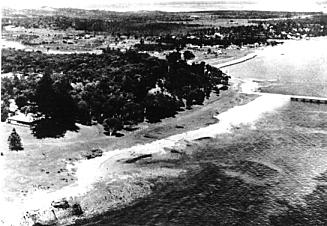
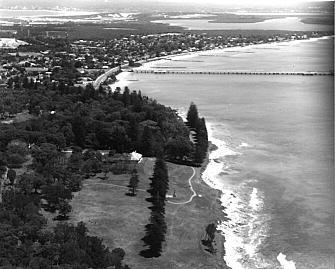
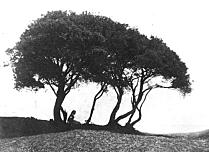 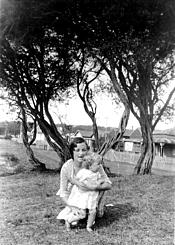 |
| top of page |
